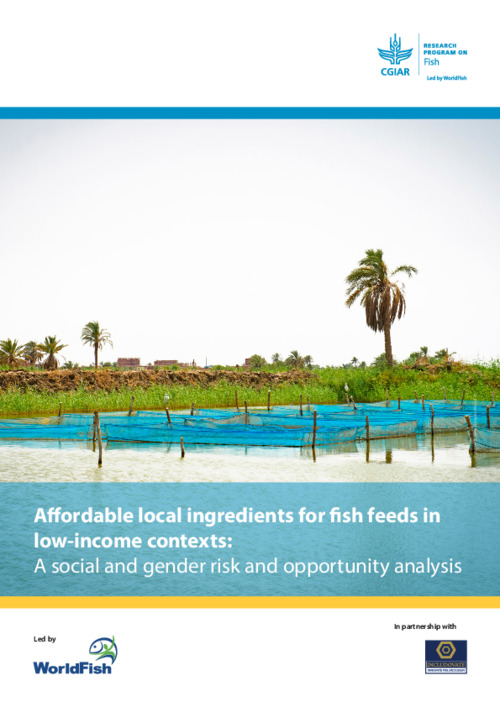Affordable local ingredients for fish feeds in low-income contexts: A social and gender risk and opportunity analysis
Abstract
Aquaculture’s contribution to food and nutrition security and also poverty reduction can be viewed in
three ways: (1) as a direct source of food, including protein and essential micronutrients, (2) as a source of
employment or entrepreneurship that supports people involved in earning income, which enables them
to buy food, and (3) as a multiplier effect in the secondary economy by increasing economic activities in
communities (Kaunda 2015).
Fish feeds are a fundamental resource for aquaculture. Yet the high costs of standard feeds limit returns for fish farmers, as they represent 40–70 percent of total production costs for small-scale aquaculturists (Enyidi et al. 2017; Singh et al. 2018). To reduce costs, especially in low-income countries, alternative affordable and nutritious fish feeds need to be found. However, introducing new ingredients could create competition or strain other aspects of small-scale aquaculture production or livelihood systems. For example, women may feed local ingredients such as peels to small livestock or use them in other types of livelihood activities they depend on for their own (only) income. Redirecting these ingredients to fish feed may inadvertently undermine women’s control over assets or cause household tension. Because of this, there is a need for alternative local ingredients that can mitigate the escalating cost of traditional fish feeds, without incurring perverse consequences. However, the risks—and opportunities—associated with fish and animal feed ingredients in low-income countries have not been adequately studied or solved. This systematic literature review helps address this gap. The three objectives of this review are to identify
1. potential social and gender risks and opportunities associated with using local ingredients for fish feed
instead of for preexisting local uses; 2. emerging gender-inclusive business and livelihood opportunities, entry points and strategies associated with using local ingredients for fish feed; 3. methods used to empirically assess these issues for designing potential future fieldwork.
In terms of methodology, the study applied a three-stage systematic technique. The first stage was
identifying peer-reviewed, unpublished and grey literature using a tailored inclusion/exclusion criteria
matrix. The second stage analyzed the selected literature centered on the objectives. The third stage was
developing methodologies to provide recommendations for potential WorldFish empirical research. These
methodologies were informed by insights from the literature review

